Summer Woolly Mammoth Moon
 Yesterday was a big day. Up early to write, workout. Lunch with Alan Rubin to start planning for the 6th and 7th grade religious school at Beth Evergreen. Home for a fitful nap. Left at 5:30 pm with Ruth for Boulder. We had a reservation at Japango on the Pearl Street Mall before seeing the Fiske Planetarium show on black holes. Driving home under the waxing gibbous moon with Jupiter below it, Mercury and Venus visible, too, as well as Mars and Saturn. A planetary moment. No twinkling please.
Yesterday was a big day. Up early to write, workout. Lunch with Alan Rubin to start planning for the 6th and 7th grade religious school at Beth Evergreen. Home for a fitful nap. Left at 5:30 pm with Ruth for Boulder. We had a reservation at Japango on the Pearl Street Mall before seeing the Fiske Planetarium show on black holes. Driving home under the waxing gibbous moon with Jupiter below it, Mercury and Venus visible, too, as well as Mars and Saturn. A planetary moment. No twinkling please.
A highlight from the Alan Rubin meeting was deepening my relationship with him, learning more of his history, sharing some of my own. I agreed to take on the task of researching Jewish Liturgical history.
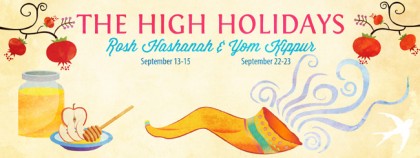 We want to reframe the high holidays, Rosh Hashanah through Yom Kippur, in a reconstructionist way, then help the kids come to their own way of reframing. In the traditional understanding, taken here from the Chabad website, each year on Rosh Hashanah “all inhabitants of the world pass before G‑d like a flock of sheep,” and it is decreed in the heavenly court “who shall live, and who shall die … who shall be impoverished and who shall be enriched; who shall fall and who shall rise.” After ten days to seek repentance from those we have harmed in the previous year, God closes the Book of Life, sealing the fate of each worshiper.
We want to reframe the high holidays, Rosh Hashanah through Yom Kippur, in a reconstructionist way, then help the kids come to their own way of reframing. In the traditional understanding, taken here from the Chabad website, each year on Rosh Hashanah “all inhabitants of the world pass before G‑d like a flock of sheep,” and it is decreed in the heavenly court “who shall live, and who shall die … who shall be impoverished and who shall be enriched; who shall fall and who shall rise.” After ten days to seek repentance from those we have harmed in the previous year, God closes the Book of Life, sealing the fate of each worshiper.
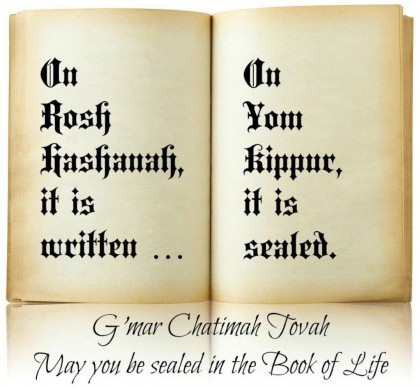 The tradition implies a white bearded, Santa Claus like God who checks on the naughty and the nice. He takes out his celestial quill pen and starts scratching. He pauses, waiting to see what you have to say for yourself, then after a reasonable interval (the ten days), he writes fini.
The tradition implies a white bearded, Santa Claus like God who checks on the naughty and the nice. He takes out his celestial quill pen and starts scratching. He pauses, waiting to see what you have to say for yourself, then after a reasonable interval (the ten days), he writes fini.
How did these holidays come to be celebrated in the first place? Why? Who observed them and how? Have the observances and meanings of those observances changed over time? How? This is the exegetical move, gathering as much data as possible about the historical holidays. The hermeneutical move comes after it, asking what in our current circumstance, our present moment, if anything, corresponds to the original intentions. There is, too, a theological move here, asking if the metaphysics of the holiday can still be plausible. If not, that informs the reframing, too.
 In my peculiar little world this is great fun. Looking forward to engaging similar research throughout the upcoming liturgical year.
In my peculiar little world this is great fun. Looking forward to engaging similar research throughout the upcoming liturgical year.
Contrast this with my evening with Ruth. (Ironically, she is exactly the target audience for the above work, being a Jewish girl about to enter 7th grade.) We went to a sushi restaurant in Boulder where she had a sushi Tokyo plate. I had a sashimi plate, chef’s new choices. Green tea, too, for both of us. Ruth said, “You know me so well.”
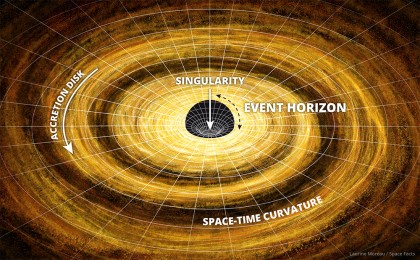 After the dinner we drove back up Broadway to the Boulder campus of the University of Colorado, about 5 minutes. At the planetarium, where we’ve gone many times, we saw a presentation on black holes. It covered the usual topics of star death, neutron stars, supernovas and the formation of black holes with their extraordinarily deep gravity wells. It also covered recent observation of the long pursued gravity waves at the Laser Interferometer Gravitational-Wave Observatory (LIGO).
After the dinner we drove back up Broadway to the Boulder campus of the University of Colorado, about 5 minutes. At the planetarium, where we’ve gone many times, we saw a presentation on black holes. It covered the usual topics of star death, neutron stars, supernovas and the formation of black holes with their extraordinarily deep gravity wells. It also covered recent observation of the long pursued gravity waves at the Laser Interferometer Gravitational-Wave Observatory (LIGO).
From the book of life to the heat death of the universe in one Friday. Quite the journey.

 Kate’s had a big couple of days. Tuesday night was the Beth Evergreen board meeting. “I feel like I’m among my peers.” And yesterday was the Needleworkers here at our house. She presented food in abundance: cherries, strawberries, blueberries, cranberry muffins, angel food cake with orange icing, brie, cooked shrimp, crackers, coffee both caffeinated and pointless.
Kate’s had a big couple of days. Tuesday night was the Beth Evergreen board meeting. “I feel like I’m among my peers.” And yesterday was the Needleworkers here at our house. She presented food in abundance: cherries, strawberries, blueberries, cranberry muffins, angel food cake with orange icing, brie, cooked shrimp, crackers, coffee both caffeinated and pointless.

 According to my weather system we’ve had 1.5 inches of rain this month. That’s 6.8% of our annual precipitation total of 22 inches. (Conifer does better than the state, precip wise, 22 inches on average with 105 inches on average falling as snow.) And most of it came over the last three days. Pinecam.com is abuzz with hosannas. Things were not looking so good when the four of us left for Durango. Now? Much better.
According to my weather system we’ve had 1.5 inches of rain this month. That’s 6.8% of our annual precipitation total of 22 inches. (Conifer does better than the state, precip wise, 22 inches on average with 105 inches on average falling as snow.) And most of it came over the last three days. Pinecam.com is abuzz with hosannas. Things were not looking so good when the four of us left for Durango. Now? Much better.
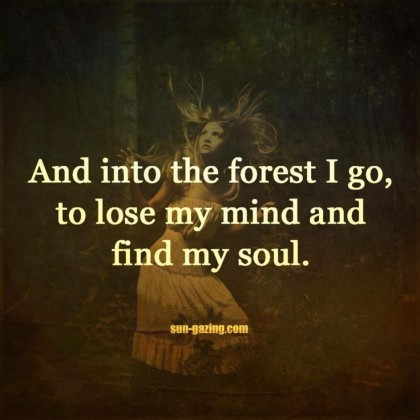 Writing, at least for me, is sufficiently compelling that I’ve continued to write over the years without success in publishing. That’s working without regard to the results. And, I found quite a while ago that that was enough for me. The writing is, itself, sufficient reward.
Writing, at least for me, is sufficiently compelling that I’ve continued to write over the years without success in publishing. That’s working without regard to the results. And, I found quite a while ago that that was enough for me. The writing is, itself, sufficient reward.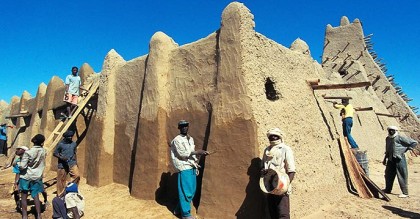
 Here’s the key idea, from Mordecai Kaplan: the past gets a vote, but not a veto. That is, when considering tradition, in Kaplan’s case of course Jewish tradition, the tradition itself informs the present, but we are not required to obey it. Instead we can change it, or negate it, or choose to accept, for now, its lesson.
Here’s the key idea, from Mordecai Kaplan: the past gets a vote, but not a veto. That is, when considering tradition, in Kaplan’s case of course Jewish tradition, the tradition itself informs the present, but we are not required to obey it. Instead we can change it, or negate it, or choose to accept, for now, its lesson.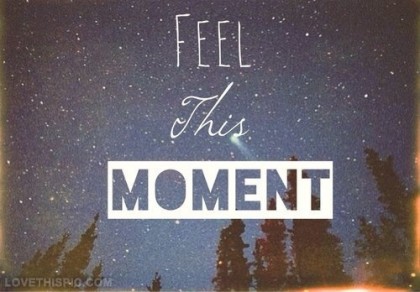 Which brings me to another realization I had this week. Just like environmental action is not about saving the planet, the planet will be fine, it’s about saving humanity’s spot on the planet; the idea of living in the moment is not about living in the moment, it’s about remembering we can do no other thing than live in the moment.
Which brings me to another realization I had this week. Just like environmental action is not about saving the planet, the planet will be fine, it’s about saving humanity’s spot on the planet; the idea of living in the moment is not about living in the moment, it’s about remembering we can do no other thing than live in the moment. The past is gone, the future is not yet. Always. We can be sure, confident, only of this instance, for the next may not come. To be aware of the moment is to be aware of both the tenuousness of life, and its vitality, which also occurs only in the moment. To know this, really know it in our bones, means we must have faith that the next moment will arrive, because it is not given. Not only is it not given, it will, someday, not arrive for us. That’s where faith comes in, living in spite of that knowledge, living as if the next moment is on its way.
The past is gone, the future is not yet. Always. We can be sure, confident, only of this instance, for the next may not come. To be aware of the moment is to be aware of both the tenuousness of life, and its vitality, which also occurs only in the moment. To know this, really know it in our bones, means we must have faith that the next moment will arrive, because it is not given. Not only is it not given, it will, someday, not arrive for us. That’s where faith comes in, living in spite of that knowledge, living as if the next moment is on its way.

 Over the course of the evening I discussed quantum physics in relation to time, the placing of a second hive box at the Herman’s, travel to Peru, working as a marketing consultant, “In business, as a consultant, you’re always justifying your existence,” and watched Rabbi Jamie’s yarmulke float to the bottom of the dunk tank.
Over the course of the evening I discussed quantum physics in relation to time, the placing of a second hive box at the Herman’s, travel to Peru, working as a marketing consultant, “In business, as a consultant, you’re always justifying your existence,” and watched Rabbi Jamie’s yarmulke float to the bottom of the dunk tank. The weather was perfect. 75 degrees, dry and blue sky sunny. It was a good event for both of us. Folks came up to Kate and said they were glad she was going to be on the board. Two other recent shoulder surgery folks attended, their effected arms still attached to their body with slings. Kate has been consistent with her rehab. The pain relief alone has been enough to make it a successful procedure, but now she’s regaining range of motion, too.
The weather was perfect. 75 degrees, dry and blue sky sunny. It was a good event for both of us. Folks came up to Kate and said they were glad she was going to be on the board. Two other recent shoulder surgery folks attended, their effected arms still attached to their body with slings. Kate has been consistent with her rehab. The pain relief alone has been enough to make it a successful procedure, but now she’s regaining range of motion, too.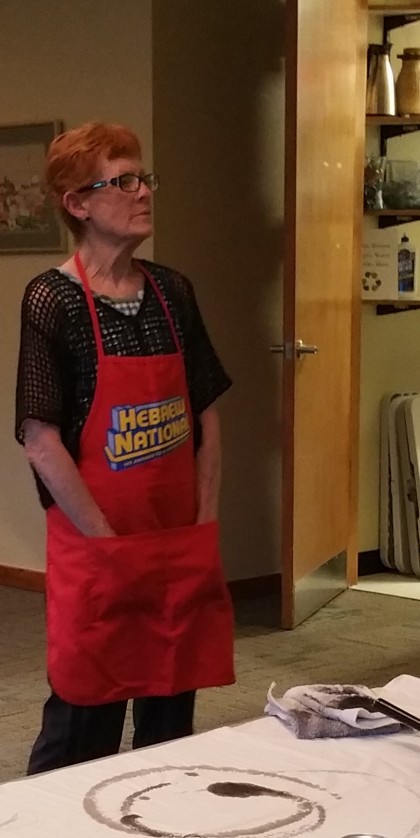
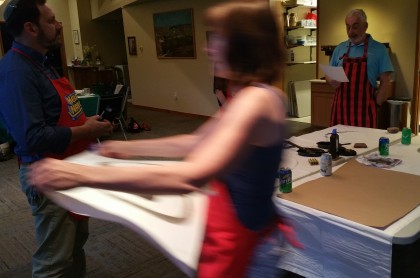
 One of us in the group last night said, “The universe is for me.” I have other friends who believe the universe is a place of abundance, or, as author
One of us in the group last night said, “The universe is for me.” I have other friends who believe the universe is a place of abundance, or, as author  Turns out quite a lot. Another of us last night told a story of night diving. A favorite activity of hers. She said she turns off her diving light and floats in the night dark ocean. While she’s in the dark, she imagines a shark behind her. The shark may kill her in the next moment, but until that moment she is keenly alive. This is, for me, a perfect metaphor for faith. Each day the shark is behind us. A car accident. A heart attack. A lightening bolt. A terminal diagnosis. Yet each day we float in the dark, suspended between this moment in which we live and the next one in which we are dead. And we rejoice in that moment. There is faith.
Turns out quite a lot. Another of us last night told a story of night diving. A favorite activity of hers. She said she turns off her diving light and floats in the night dark ocean. While she’s in the dark, she imagines a shark behind her. The shark may kill her in the next moment, but until that moment she is keenly alive. This is, for me, a perfect metaphor for faith. Each day the shark is behind us. A car accident. A heart attack. A lightening bolt. A terminal diagnosis. Yet each day we float in the dark, suspended between this moment in which we live and the next one in which we are dead. And we rejoice in that moment. There is faith. This is the existentialist abyss of which Nietzsche famously said, “If you stare into the abyss, the abyss stares back at you.” Living on in spite of its direct glare, that’s faith. This sort of faith requires no confidence in the good or ill will of the universe, it requires what Paul Tillich called the courage to be. I would challenge that formulation a bit by altering it to the courage to become, but the point is the same.
This is the existentialist abyss of which Nietzsche famously said, “If you stare into the abyss, the abyss stares back at you.” Living on in spite of its direct glare, that’s faith. This sort of faith requires no confidence in the good or ill will of the universe, it requires what Paul Tillich called the courage to be. I would challenge that formulation a bit by altering it to the courage to become, but the point is the same. So. My practice for this month involves, in Rabbi Jamie’s phrase, sharpening my doubt. I will remember the shark as often as I can. I will recognize the contingent nature of every action I take, of every aspect of my life. And live into those contingencies, act as if the shark will let me be right now. As if the uncertainty of driving, of interacting with others, of our dog’s lives will not manifest right now. That’s faith. Action in the face of contingency. Action in the face of uncertainty. Action in the face of doubt.
So. My practice for this month involves, in Rabbi Jamie’s phrase, sharpening my doubt. I will remember the shark as often as I can. I will recognize the contingent nature of every action I take, of every aspect of my life. And live into those contingencies, act as if the shark will let me be right now. As if the uncertainty of driving, of interacting with others, of our dog’s lives will not manifest right now. That’s faith. Action in the face of contingency. Action in the face of uncertainty. Action in the face of doubt. After sledging and searing the meat and softening the vegetables in the fat, I put a three or four pound hunk of chuck roast in the slow cooker along with potatoes, carrots, onions and celery. It cooked all day, coming out fork tender. An easy meal. Jon and the kids got stuck in traffic so they ate later.
After sledging and searing the meat and softening the vegetables in the fat, I put a three or four pound hunk of chuck roast in the slow cooker along with potatoes, carrots, onions and celery. It cooked all day, coming out fork tender. An easy meal. Jon and the kids got stuck in traffic so they ate later.